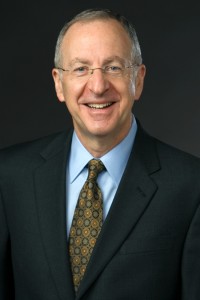Smithsonian Institution welcomes new Secretary
09 July 2015 – Will Walker
The wide scope of new Smithsonian Secretary David J. Skorton’s interests and expertise is a good match for the sweeping breadth of the Smithsonian Institution. Formerly president of Cornell University, Skorton is a cardiologist and biomedical researcher who is also an accomplished jazz musician. What, to some, may seem like an unlikely combination of scientific and musical ability and achievement fits well with a tradition of capacious Smithsonian leadership. Skorton’s background suggests a kinship with great Smithsonian secretaries of the past: Joseph Henry, the first secretary; Spencer Baird, his successor; and S. Dillon Ripley, who presided over the institution’s expansion and transformation in the sixties and seventies. These men were also scientists whose interests extended far beyond the laboratory to include the arts and humanities. If Skorton follows their lead, the venerable national institution has a bright future.
A physicist who conducted pioneering electromagnetic experiments, Joseph Henry defined the scope of the Smithsonian in the decades after its founding in 1846. Taking seriously the Smithsonian’s founding charge to be an institution dedicated to the increase and diffusion of knowledge, he saw the Smithsonian’s purview in the broadest possible terms. The Smithsonian he envisioned would sponsor and disseminate research in virtually all areas of human inquiry. Natural scientist Spencer Baird carried this pursuit into the material realm, amassing and overseeing the organization of growing mountains of physical collections in the United States National Museum. By refusing to limit the Smithsonian’s research work or collecting to their own narrow fields, or even to science as traditionally defined, Henry and Baird built the foundation on which the sprawling institution of today is built.
Closer to our time, Secretary Dillon Ripley brought a similarly wide-ranging set of interests to the Smithsonian. A Harvard-trained zoologist, Ripley was an accomplished scholar of the flora and fauna–especially birds–of Asia. When he assumed leadership of the Smithsonian in 1964, he gave as much attention, if not more, to history, art, and culture as he did to science. In two decades, Ripley oversaw the founding of the Smithsonian Folklife Festival, the Anacostia Neighborhood Museum, the Renwick Gallery, the Hirshhorn Museum, the National Air and Space Museum, and Smithsonian magazine. He also brought the National Museum of African Art into the Smithsonian’s orbit. Ripley succeeded in many of these ventures, but it was one of his failed ideas that embodied the all-encompassing scope of his career. He tried unsuccessfully for many years to create a Museum of Man, which might have brought exhibitions of history, culture, art, and science together under one roof. Still, Ripley’s ambition, charm, and catholicity of interests transformed the Smithsonian into the monumental and diverse museum and research complex it is today.
As historians, scientists, and humanists today strive to bring the insights of natural history and cultural history to bear on the social and environmental issues that humans face as a species, the Smithsonian is able to draw on a rich legacy of intertwined historical, humanistic, and scientific inquiry. David Skorton has just begun his tenure as the Smithsonian’s thirteenth secretary, but by following the interdisciplinary path of his predecessors and connecting science, history, and the arts, he will ensure the Smithsonian’s relevance in the months and years ahead.
~ Will Walker is associate professor of history at the Cooperstown Graduate Program (SUNY Oneonta). He is the author of A Living Exhibition: The Smithsonian and the Transformation of the Universal Museum.




